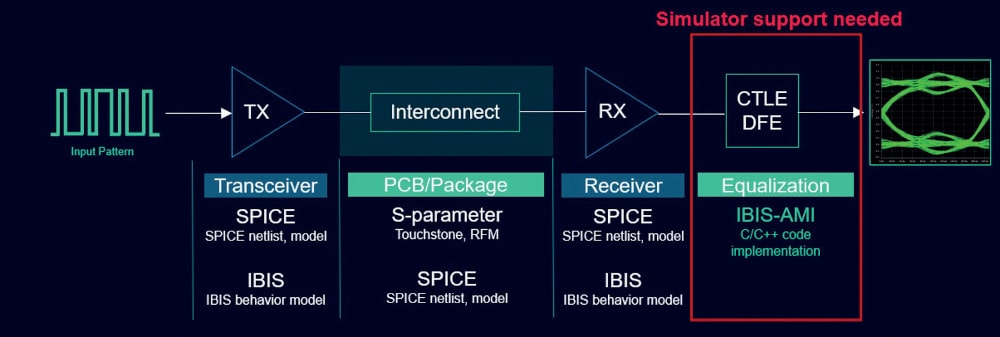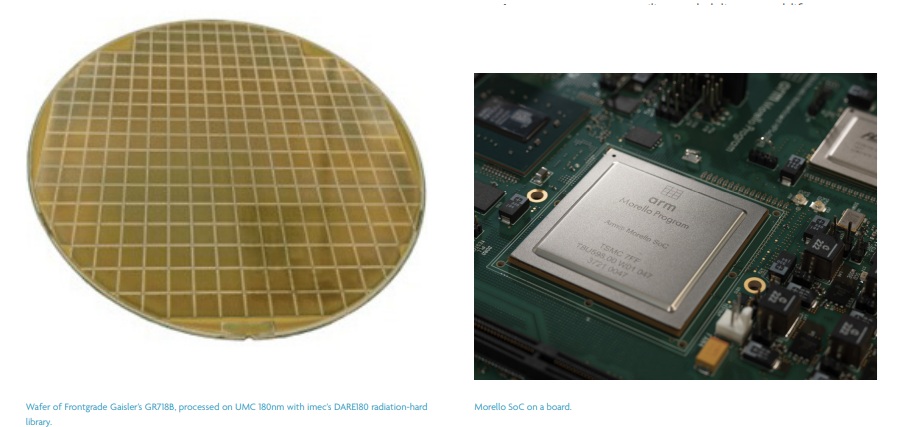As I mentioned in my blog GlobalFoundries Update 2012, the GFI people are on the move at DAC 2012. Here is a little more detail on the up and coming AMS and Digital reference flows for 28nm and 20nm.… Read More
 A Webinar About Electrical Verification – The Invisible Bottleneck in IC DesignElectrical rule checking (ERC) is a standard part…Read More
A Webinar About Electrical Verification – The Invisible Bottleneck in IC DesignElectrical rule checking (ERC) is a standard part…Read More Signal Integrity Verification Using SPICE and IBIS-AMIHigh-speed signals enable electronic systems by using memory…Read More
Signal Integrity Verification Using SPICE and IBIS-AMIHigh-speed signals enable electronic systems by using memory…Read More imec on the Benefits of ASICs and How to Seize ThemIn an era where product differentiation increasingly depends…Read More
imec on the Benefits of ASICs and How to Seize ThemIn an era where product differentiation increasingly depends…Read More MZ Technologies Launches Advanced Packaging Design Video SeriesIn a significant move aimed at empowering semiconductor…Read More
MZ Technologies Launches Advanced Packaging Design Video SeriesIn a significant move aimed at empowering semiconductor…Read MoreDAC: there’s an App for that
Bill Deegan has produced a new version of his iPhone DAC app for this years conference. You can download it for free from the Apple App Store here. It is basically a mobile version of the DAC conference brochure with schedules for the various events (which it can add to your calendar if you decide you are interested) and the floorplan… Read More
EDAC emerging companies, Hogan evening
This evening at Silicon Valley Bank was the first of what is planned to be a series about EDA startups. Apparently the seed of the idea was planted by Dan Nenni with Jim Hogan and Steve Pollock and the EDAC Emerging Companies committee ran with it.… Read More
Apple Will Build In America
As Apple races towards $200B in revenue, sometime in 2013 and perhaps $300B by 2015, Tim Cook knows it is in Apple’s best interests to start building a sizeable percentage of iPhones and iPADs in the US and soon. At the All Things D conference this week, Walt Mossberg asked Cook about Apple’s manufacturing presence in China and “if … Read More
TSMC Update 2012!
TSMC has had an interesting year thus far. 28nm is ramped and will dominate the mobile market for years to come. 20nm is in development with tape outs scheduled for the end of this year. FinFETS are coming making it a very exciting time in the semiconductor ecosystem. … Read More
ClioSoft Update 2012!
ClioSoft had a record year in 2011, right after they started working with SemiWiki. Coincidence? Of course not. You can visit the SemiWiki ClioSoft landing page HERE. Be sure and read the customer interviews done by Daniel Payne. It is really nice to see customers stand up and speak for their tools, much more interesting than listening… Read More
Mary Meeker’s Internet Trends
Every year or so Mary Meeker (at Kleiner-Perkins) does a big presentation on internet trends. Since the internet in general and mobile in particular is a big driver for the semiconductor industry, this report is a treasure trove of useful data and interesting facts.
For example, this graph shows the adoption rate of iPods, iPhones… Read More
Mentor Graphics Update 2012!
What is new with Mentor? Quite a bit actually. About this time last year Corporate Raider Carl Icahn stirred things up with a hostile takeover attempt that ended with three Raiderettes on the Mentor Board, out of eight board members total. This year however, two of the three Raiderettes are out so it looks like Mentor is firmly in control.… Read More
Two New Board Members at Mentor Graphics
One year ago the annual share holder meeting at Mentor Graphics had tight security, a no-camera policy, and the drama of Carl Icahn the corporate raider successfully adding three new board members. Fast forward to today where two of Icahn’s board members were not even nominated, and Mentor added two new board members. I chatted… Read More
SpyGlass…the Mystery
Atrenta have put out a mysterious press release, a sort of teaser for what they are up to at DAC.
The first part is that they have an interview program at their booth (#2230) on the show floor where customers, partners and investors will talk about SpyGlass. Current speakers are:
- Jack Browne (Sonics)
- Jim Hogan (private investor)
- Charlie












Quantum Computing Technologies and Challenges